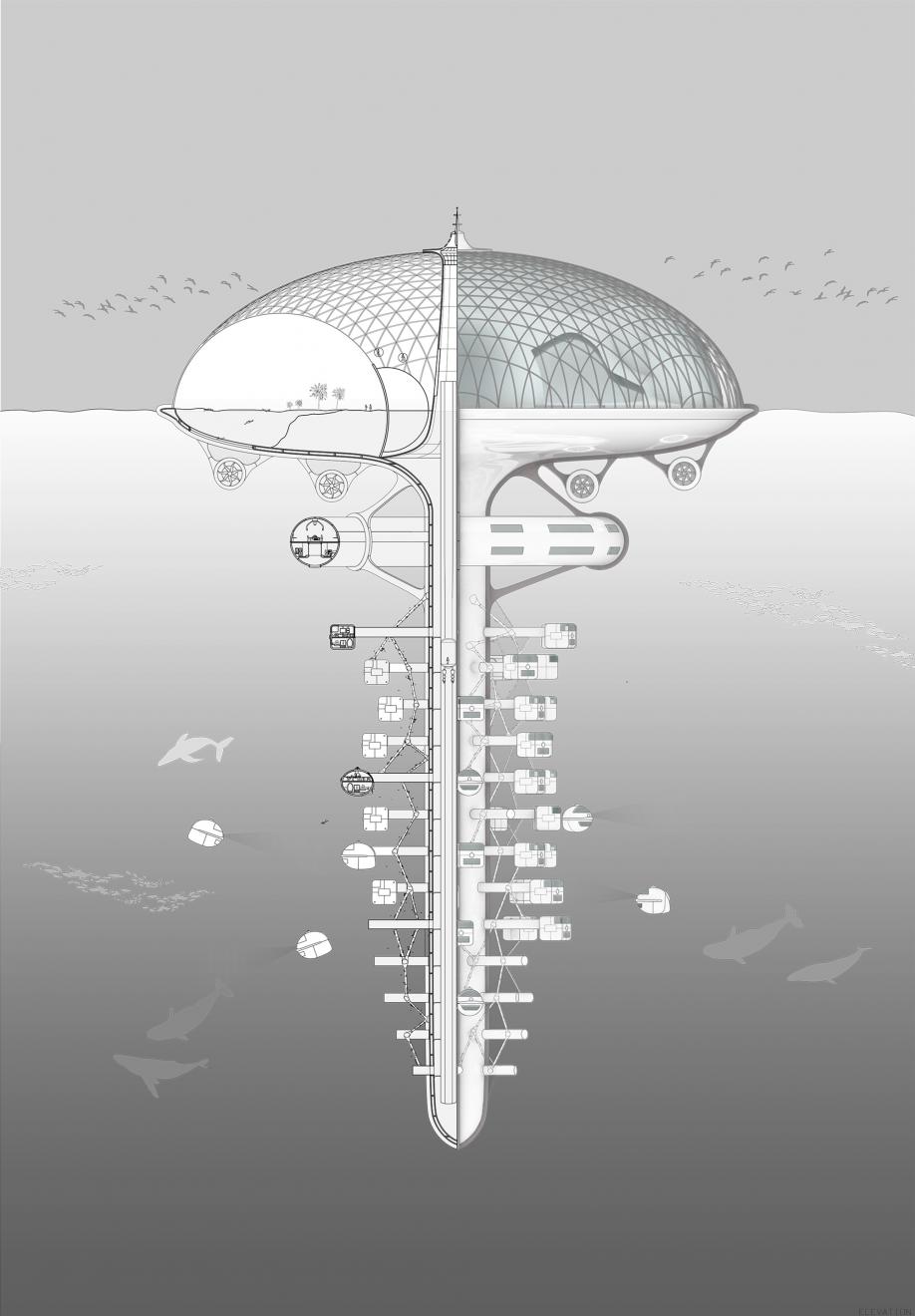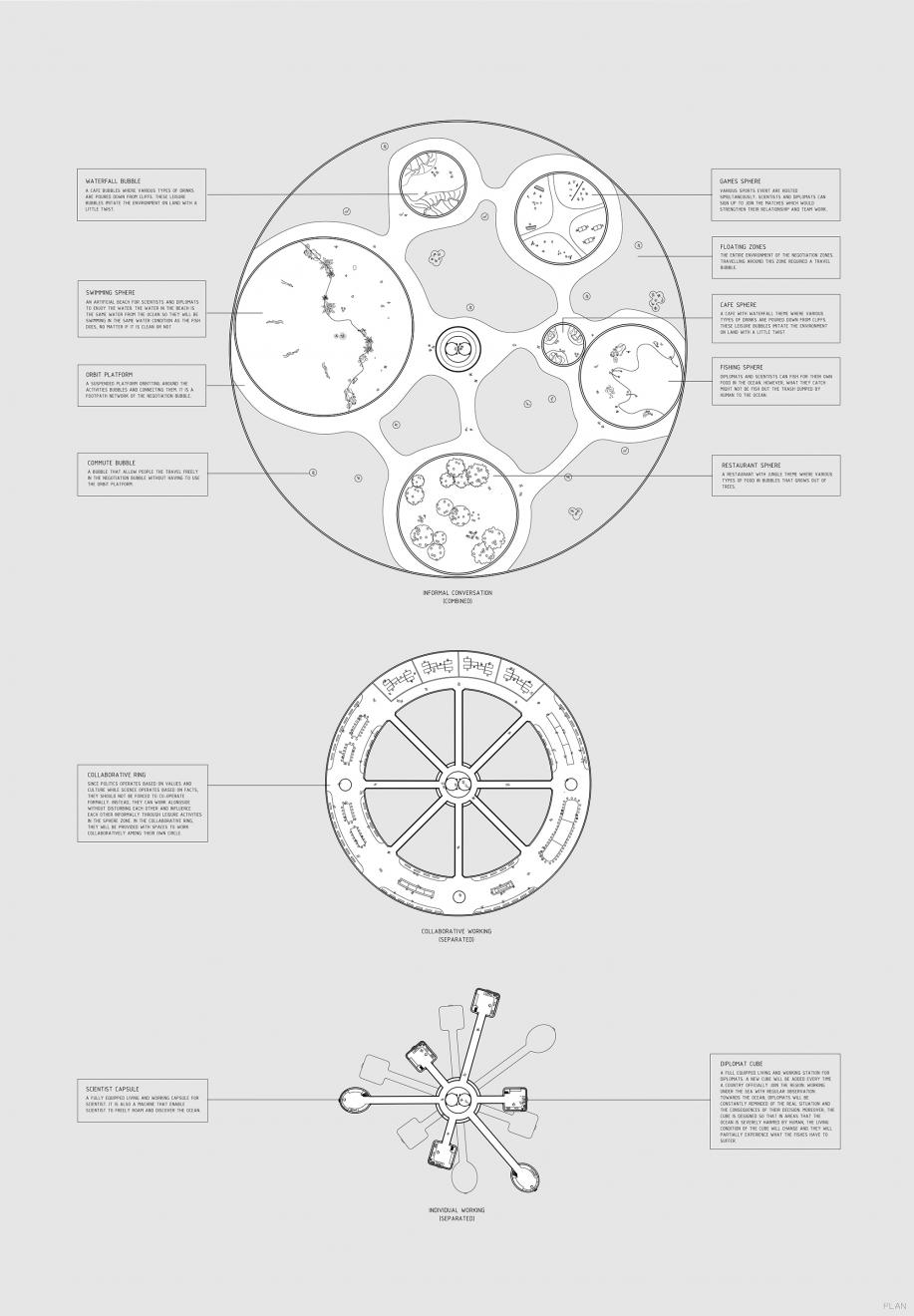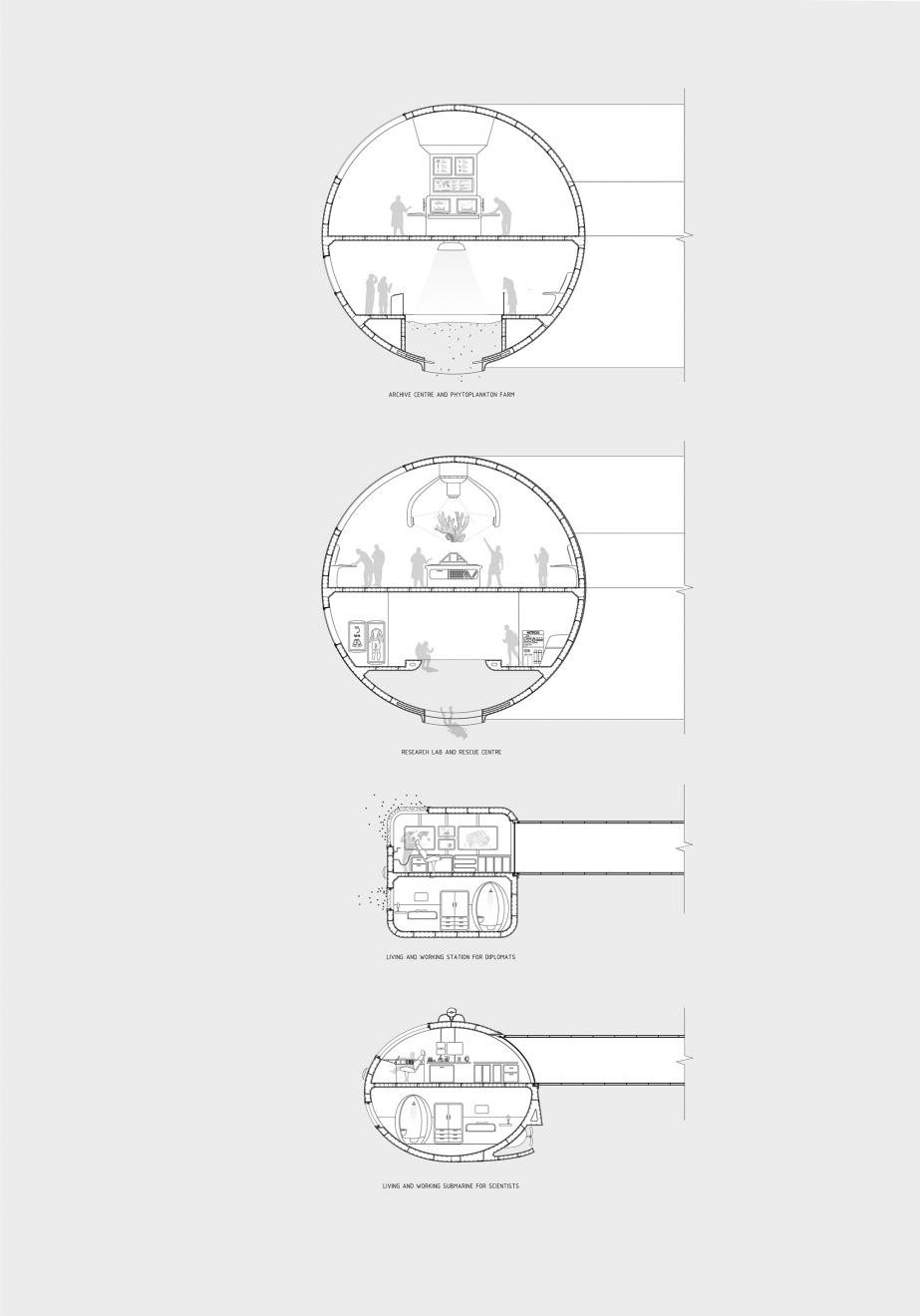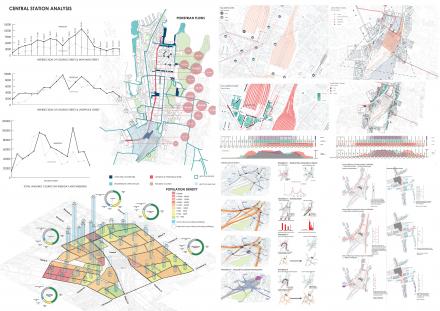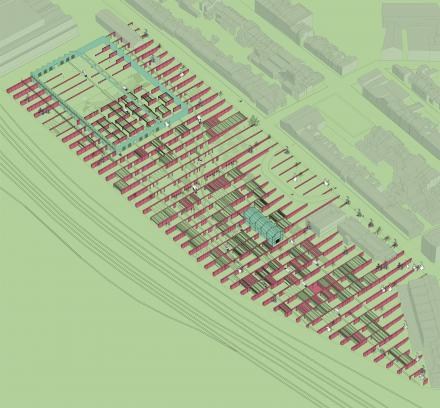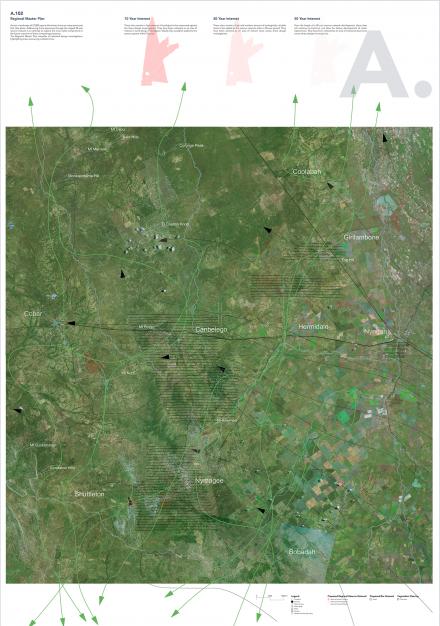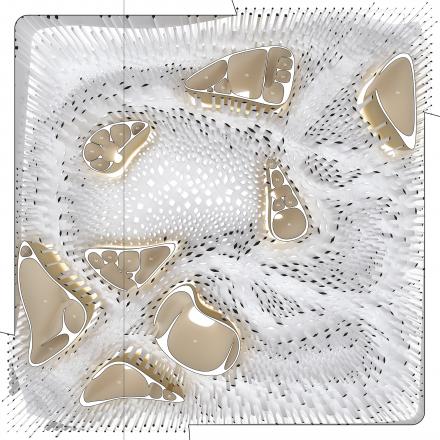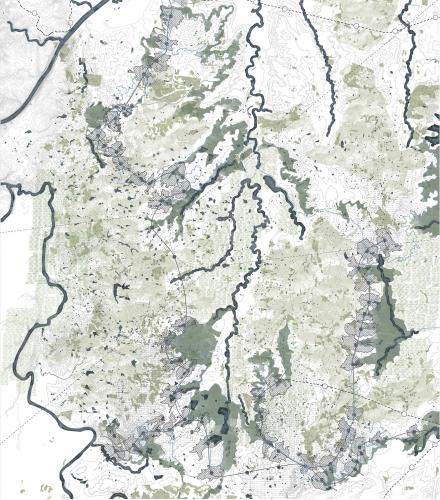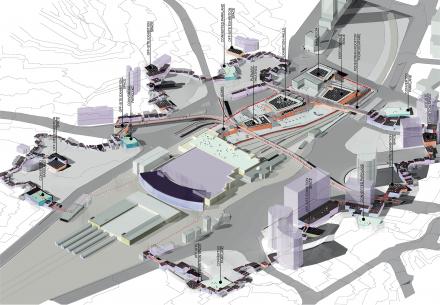In 2013, the Australian Defence White Paper, ‘Indo-Pacific Strategic Arc’, officially relocated Australia to the Indo-Pacific region, a virtual space that expands from the east coast of Africa to the west coast of South America. This region’s emergent geostrategic importance is rivalled only by the economic value of the maritime trade it hosts. Yet, beyond the Australian Defence White Paper and limited discussion in diplomatic circles in the 1960s, the ‘region’ has no legal agreements, international institutions or national borders define its scope.
In this studio subject, students were asked to draw the Indo Pacific region, and to design the institution that represents, governs and/or defines it. One of these projects was Float, a proposal for a floating international institution. By living and working inside the water, diplomatic representatives will have constant observation over the region they are charged with overseeing, helping to reinforce the importance of their decisions for the ocean and its inhabitants.
Ocean pH levels are decreasing due to the uptake of carbon dioxide. With the increase of CO2, dead zones are formed all around the region. Inside the diplomats’ cubes, there is a pH sensor system, which measures and release carbon dioxide into the cube for 5 minutes when the water pH is lower than 6.7. Diplomats will suffer from a slight sense of suffocation, mimicking the suffering of ocean lifeforms due to oceanic acidification. The structure wraps around the building, replicating the calcium skeletons of dead corals, which build up over thousands of years to create a living structure.
